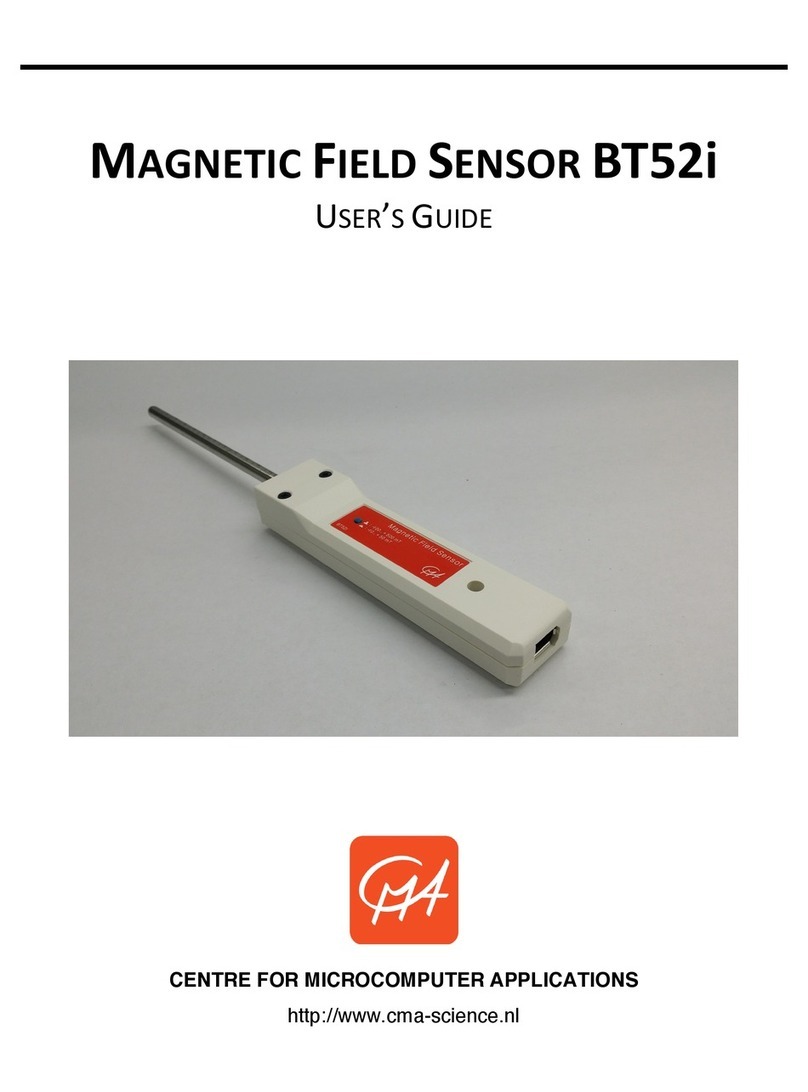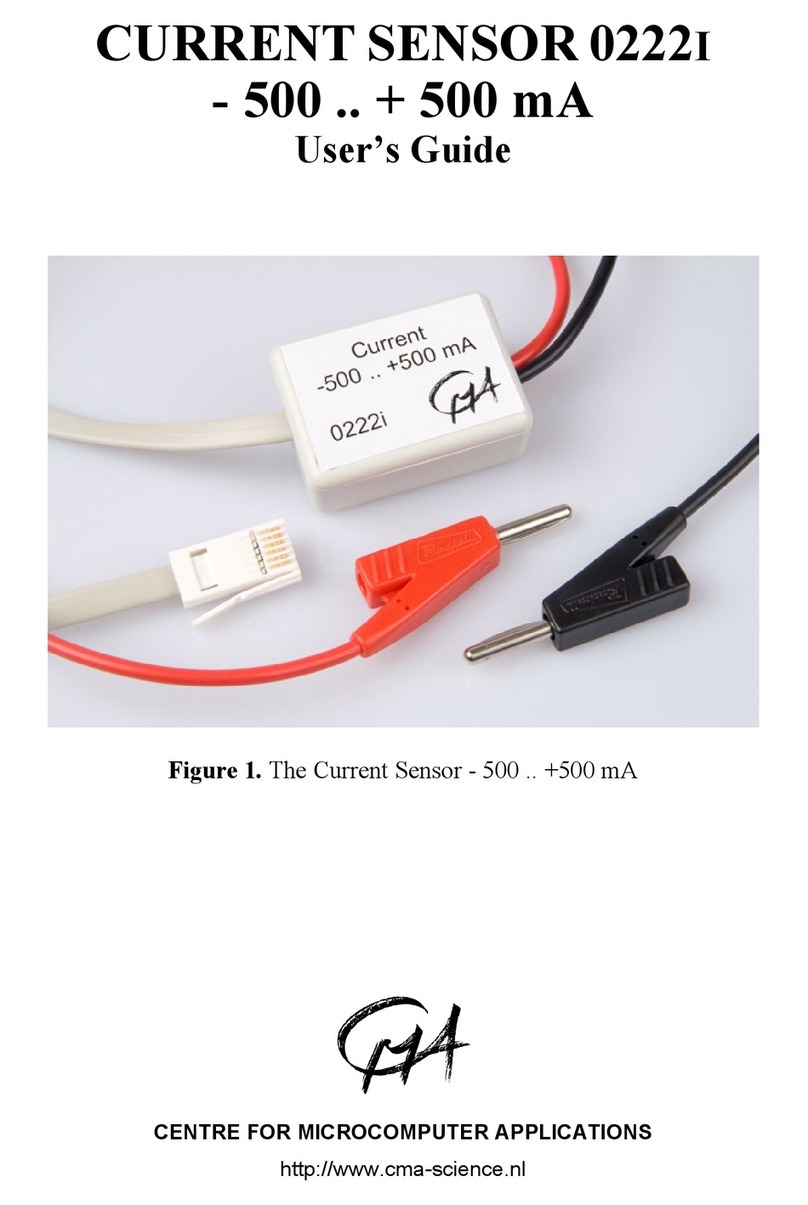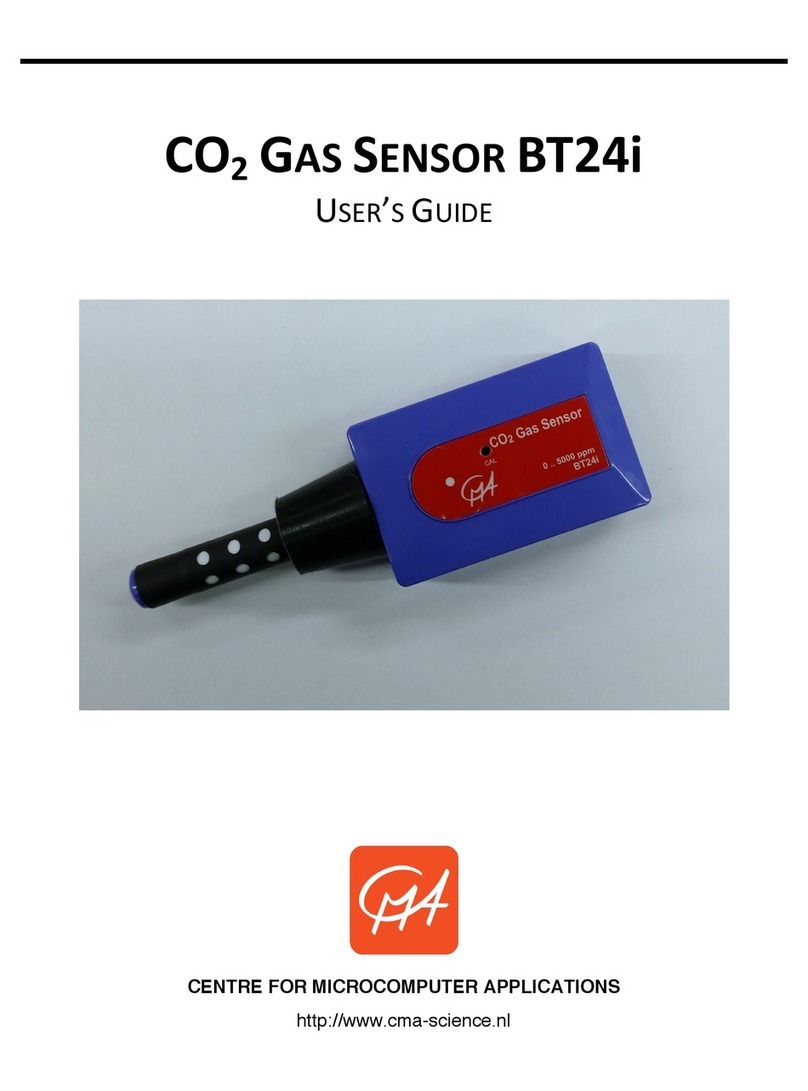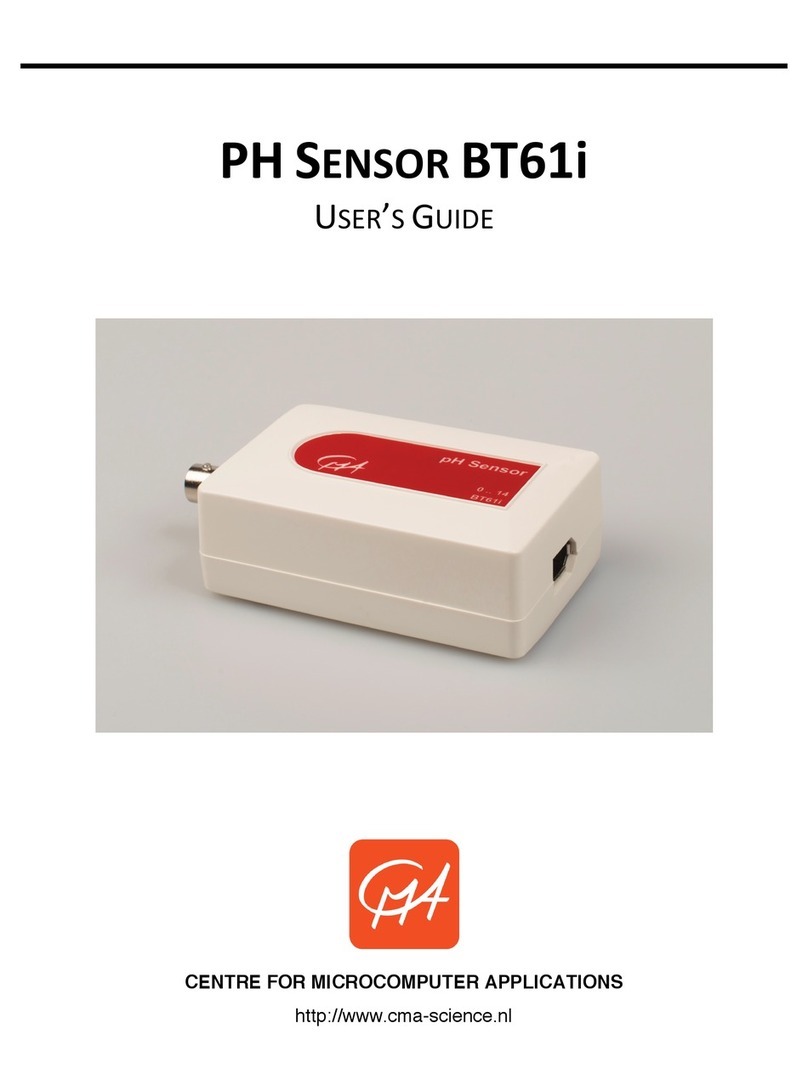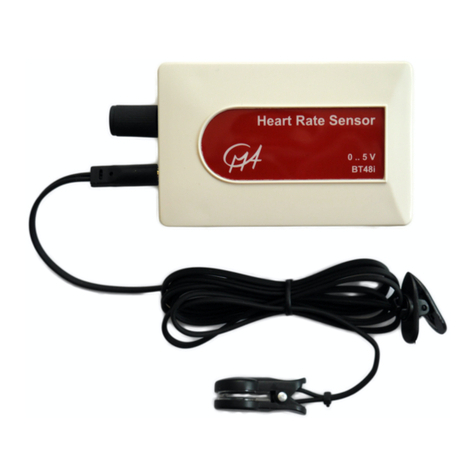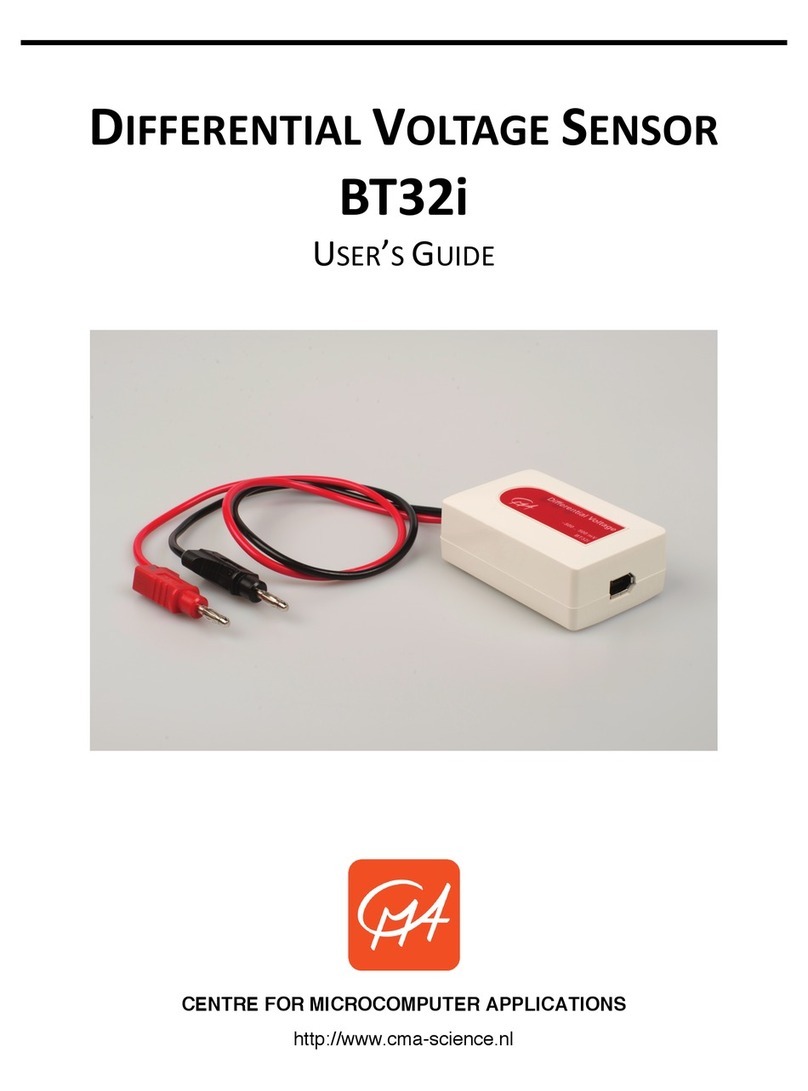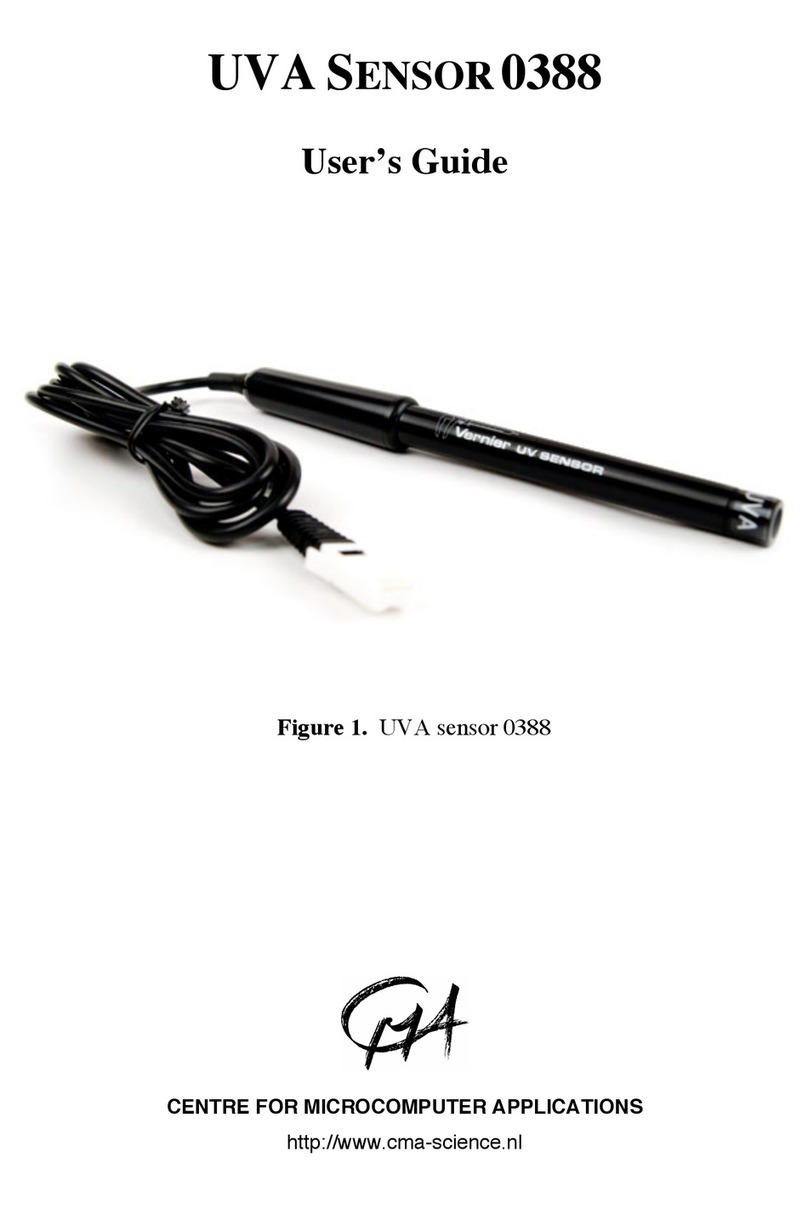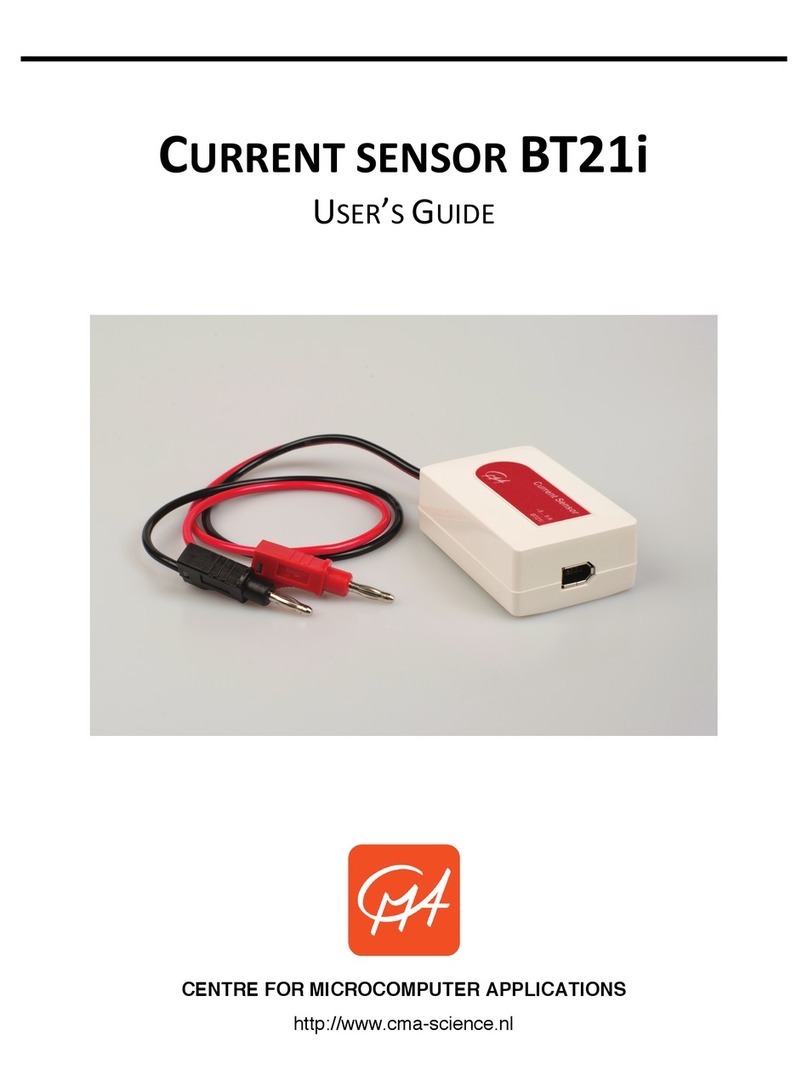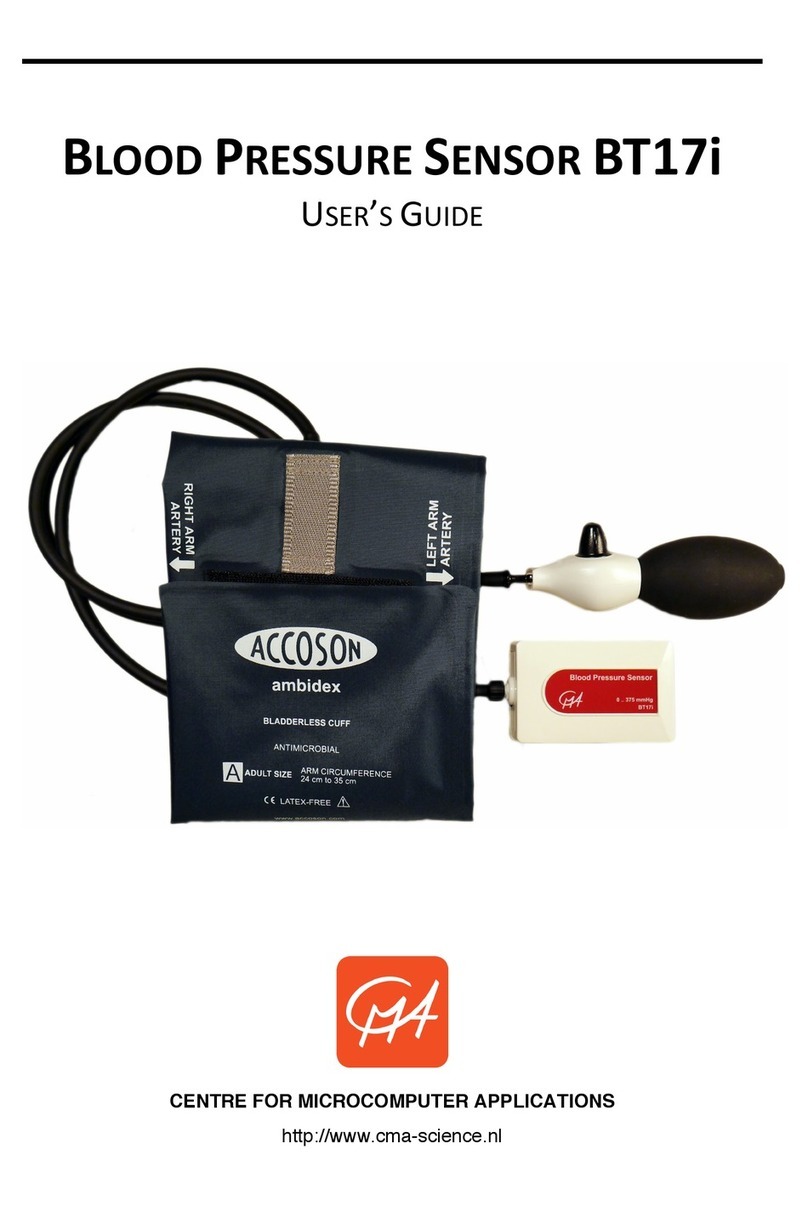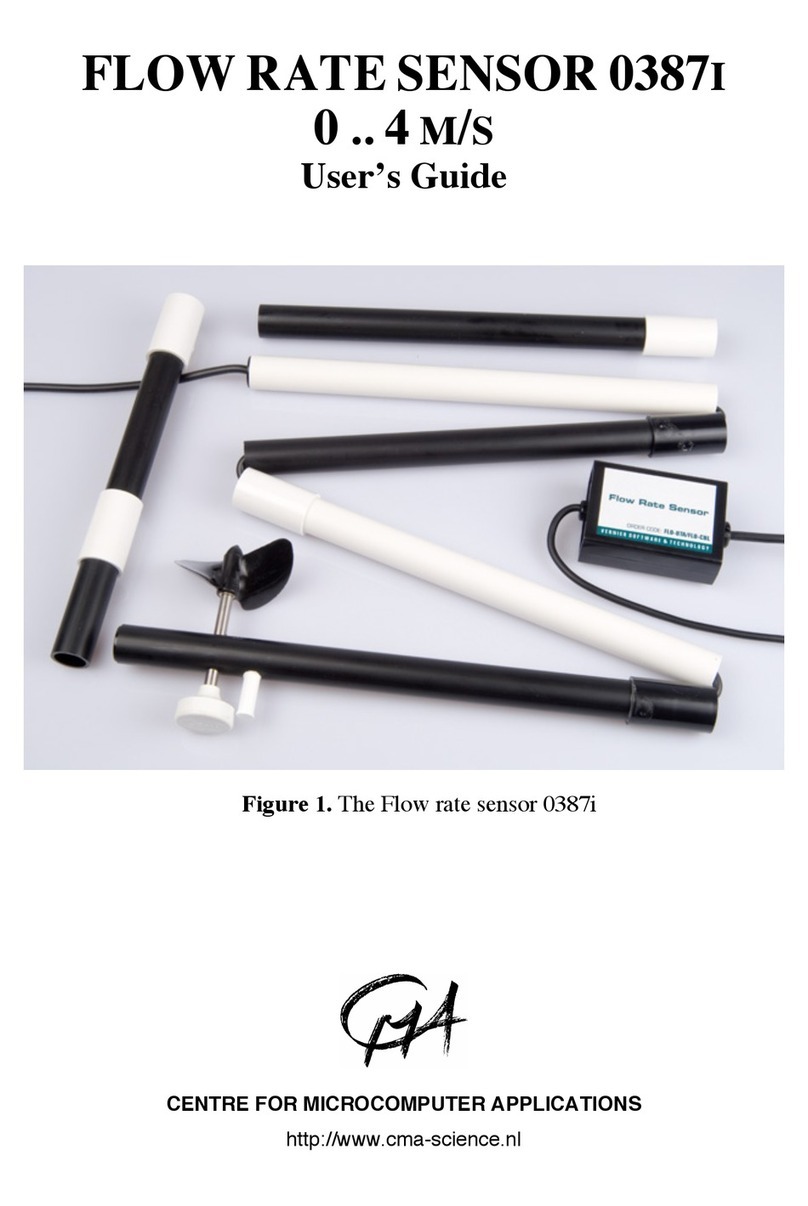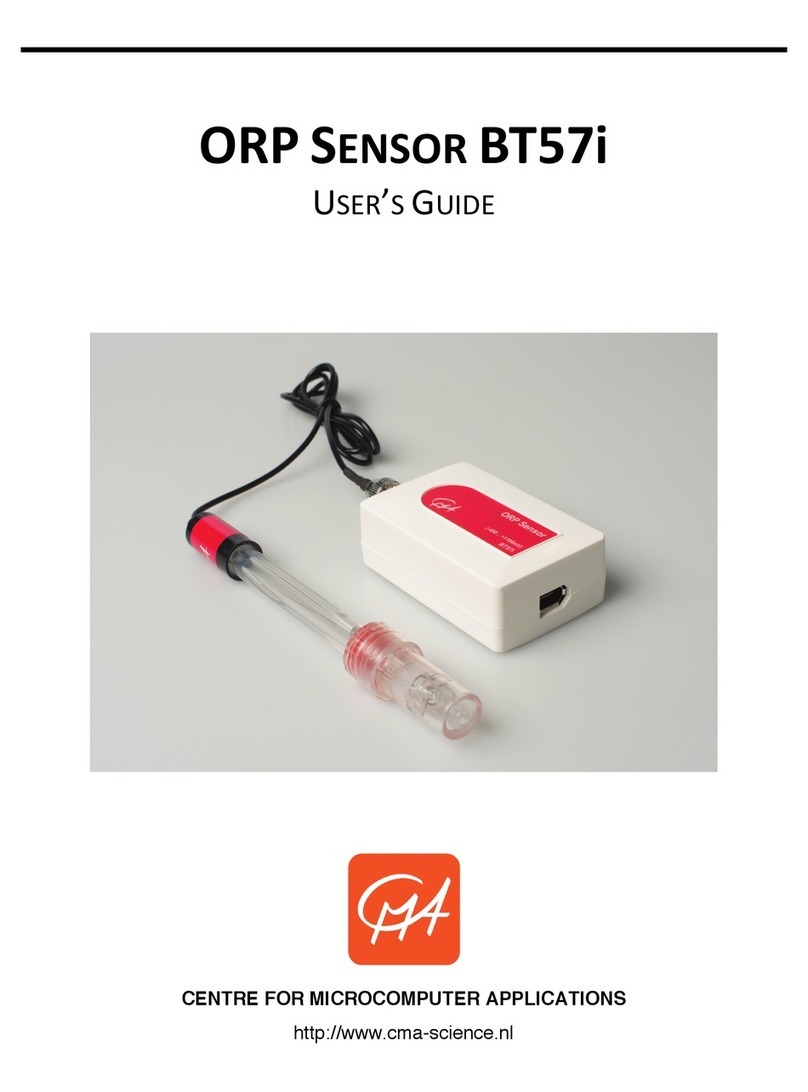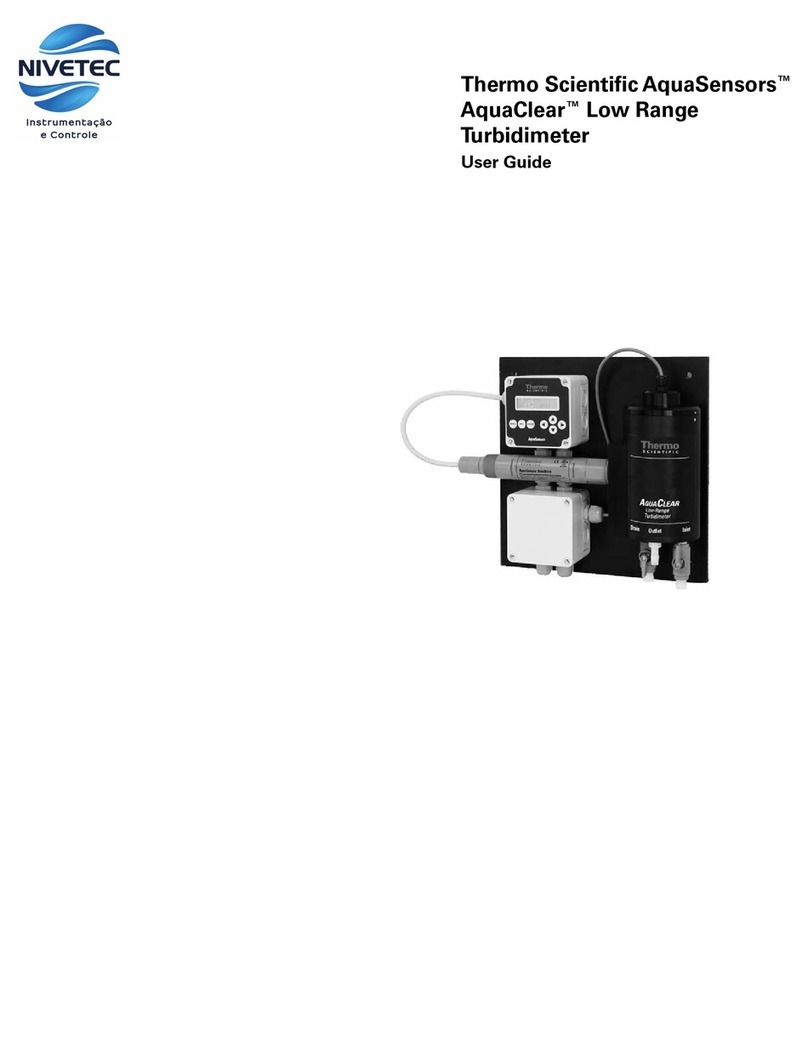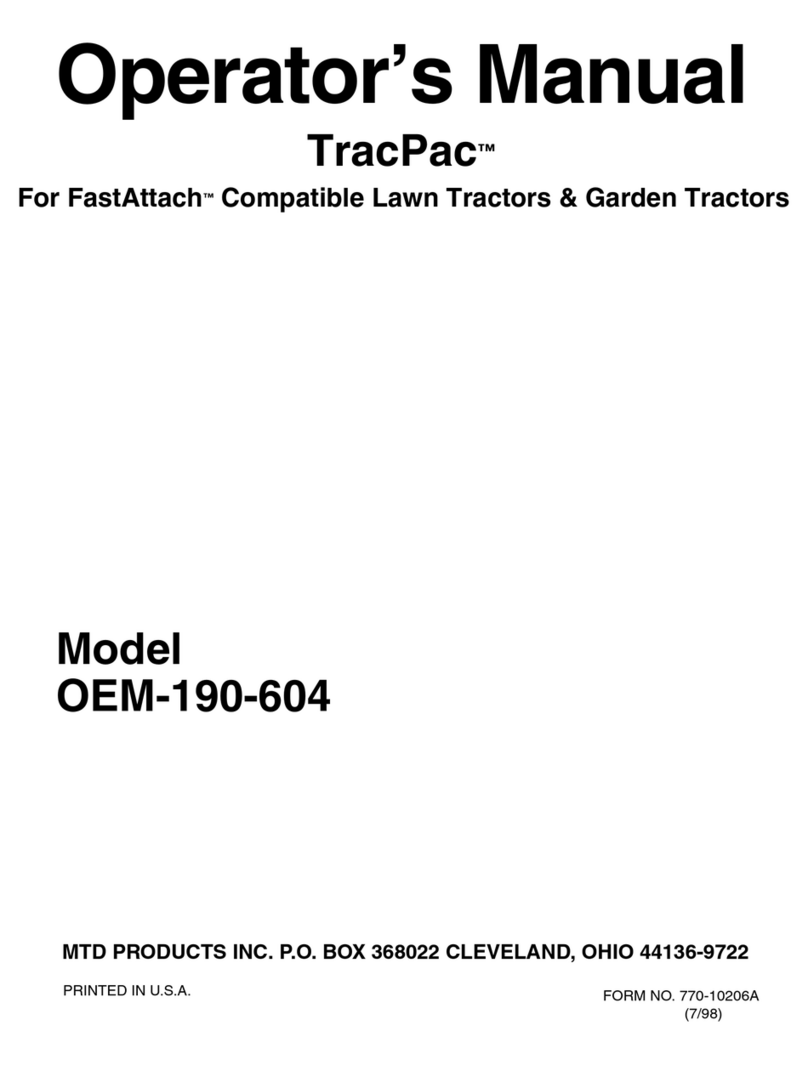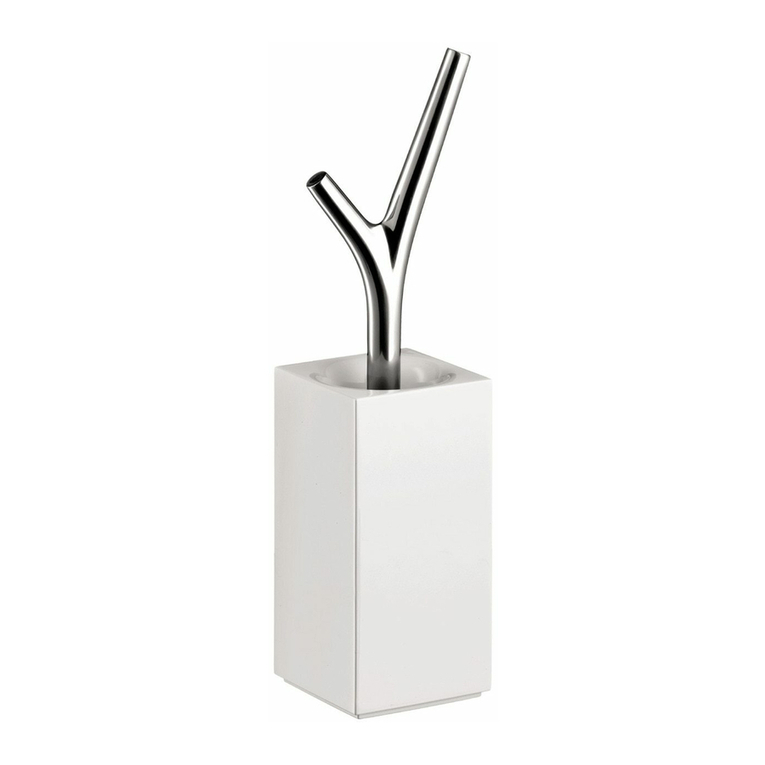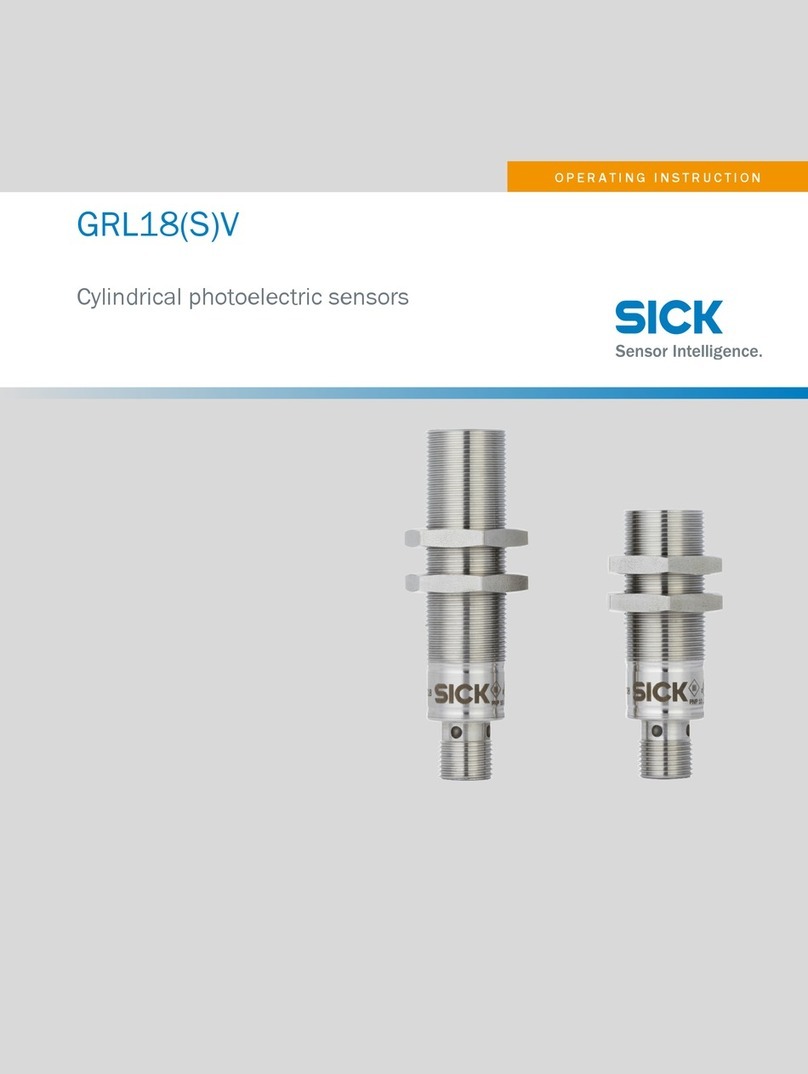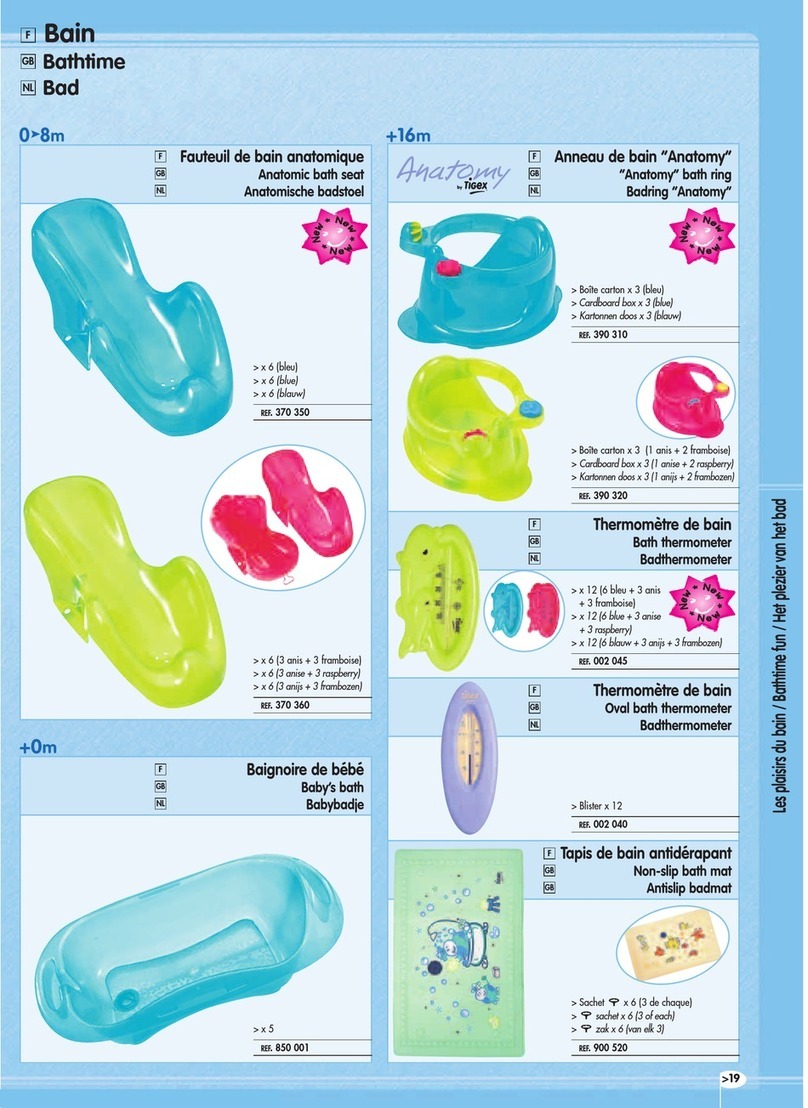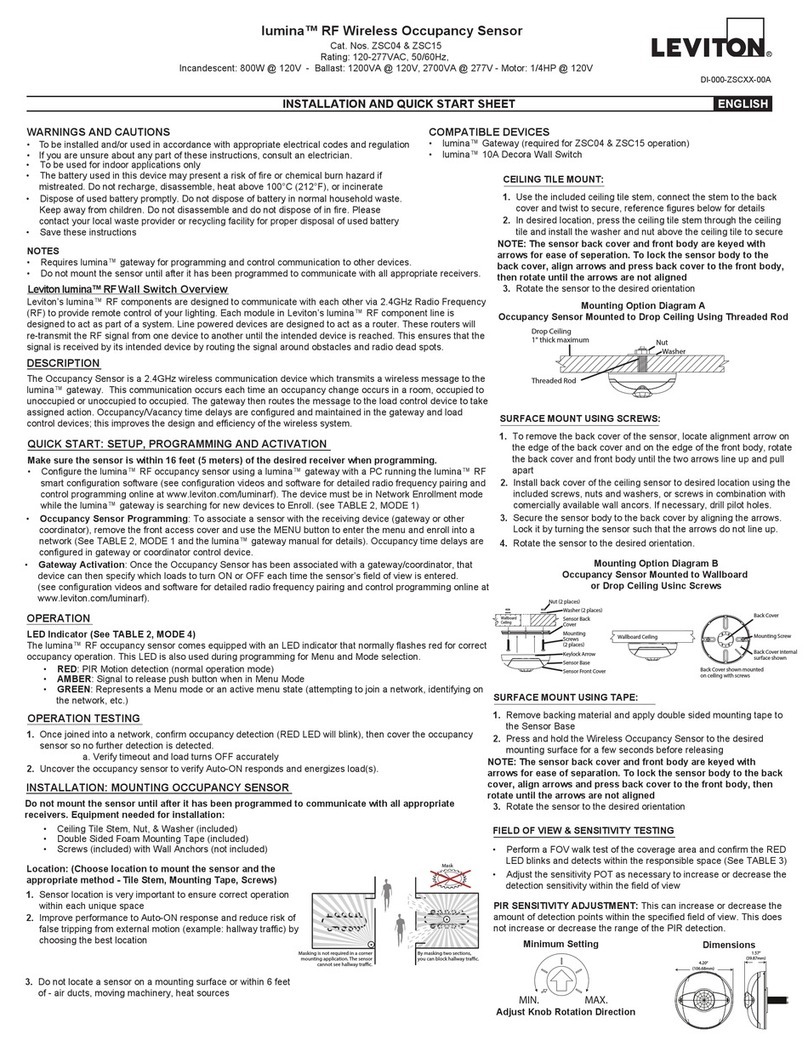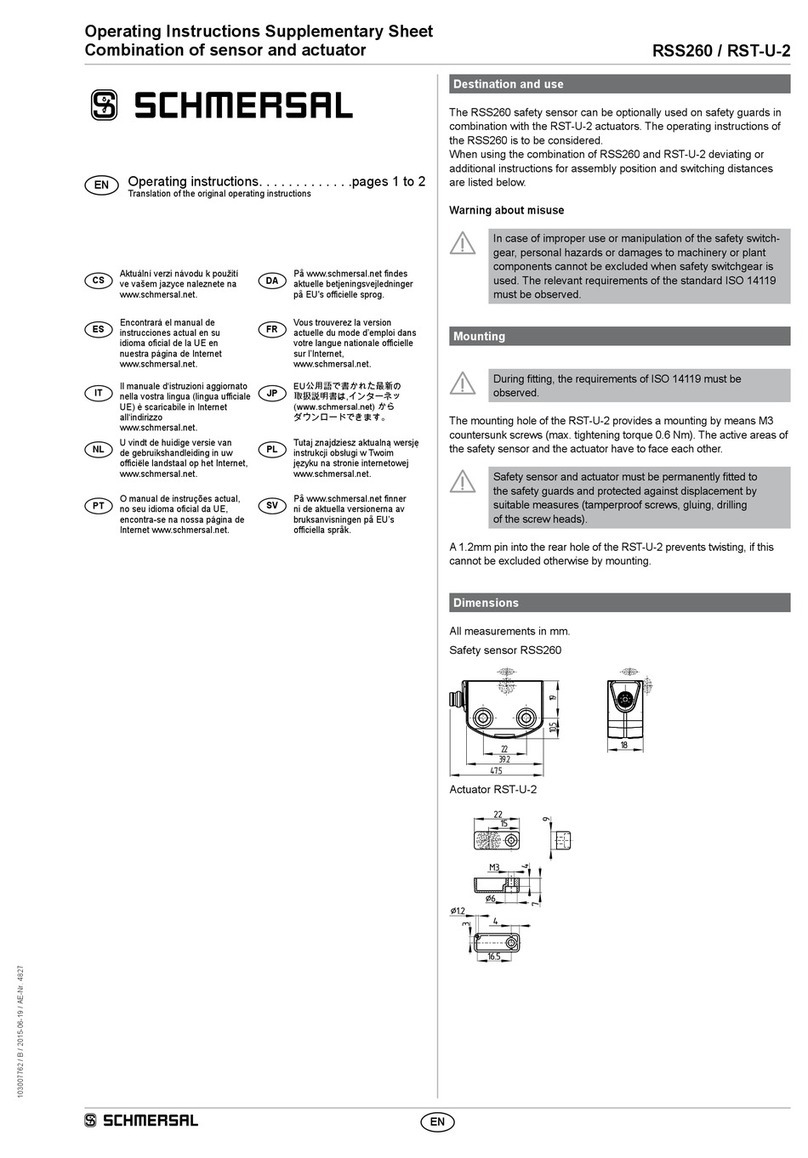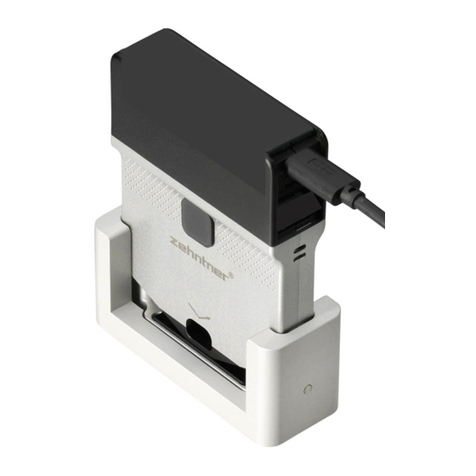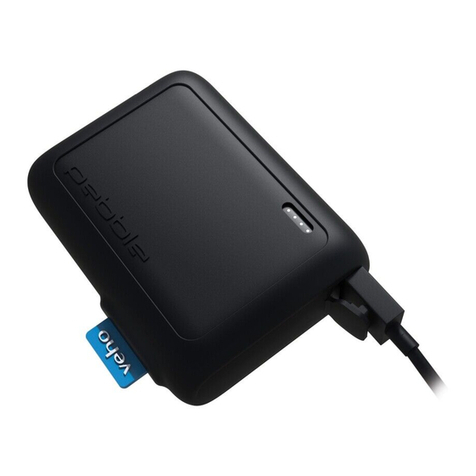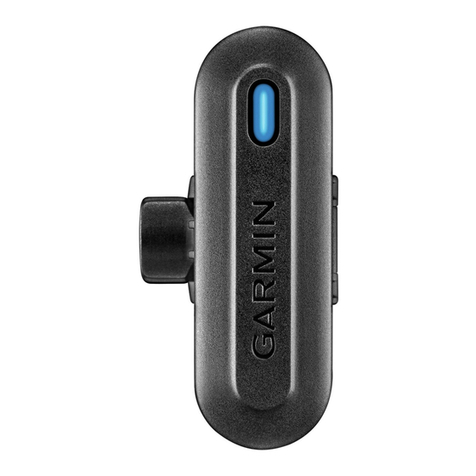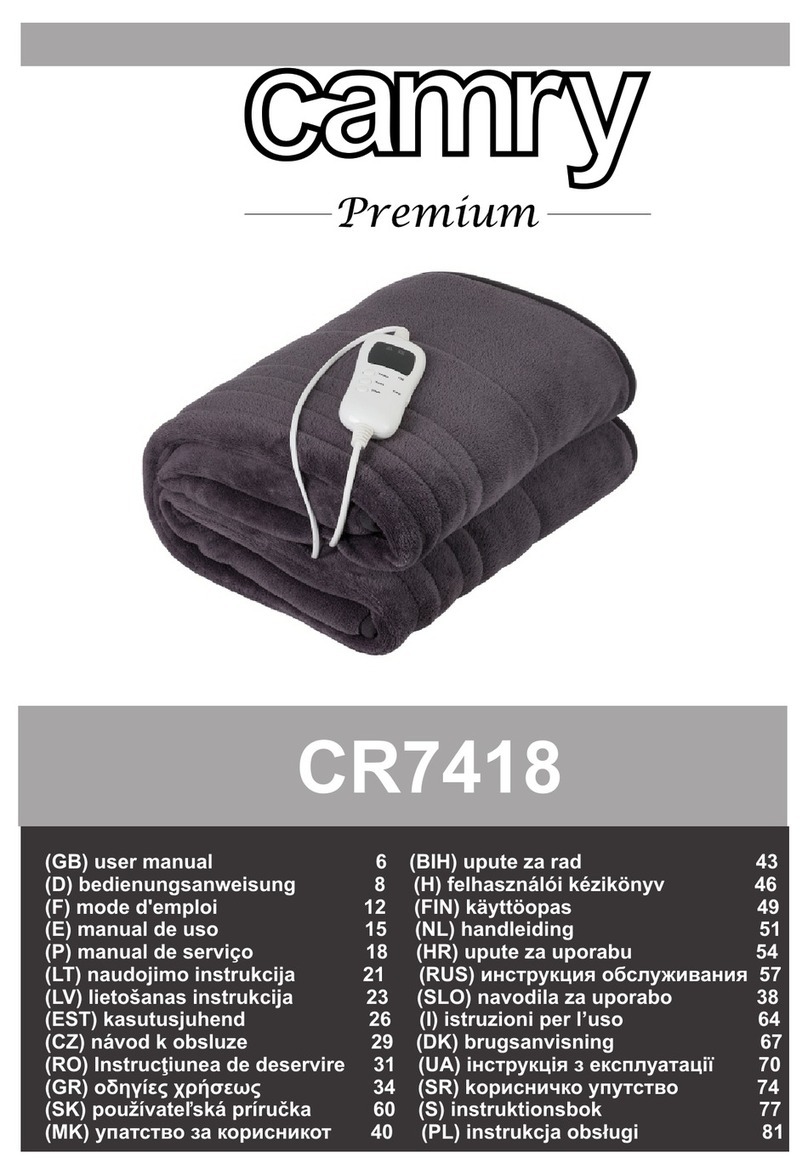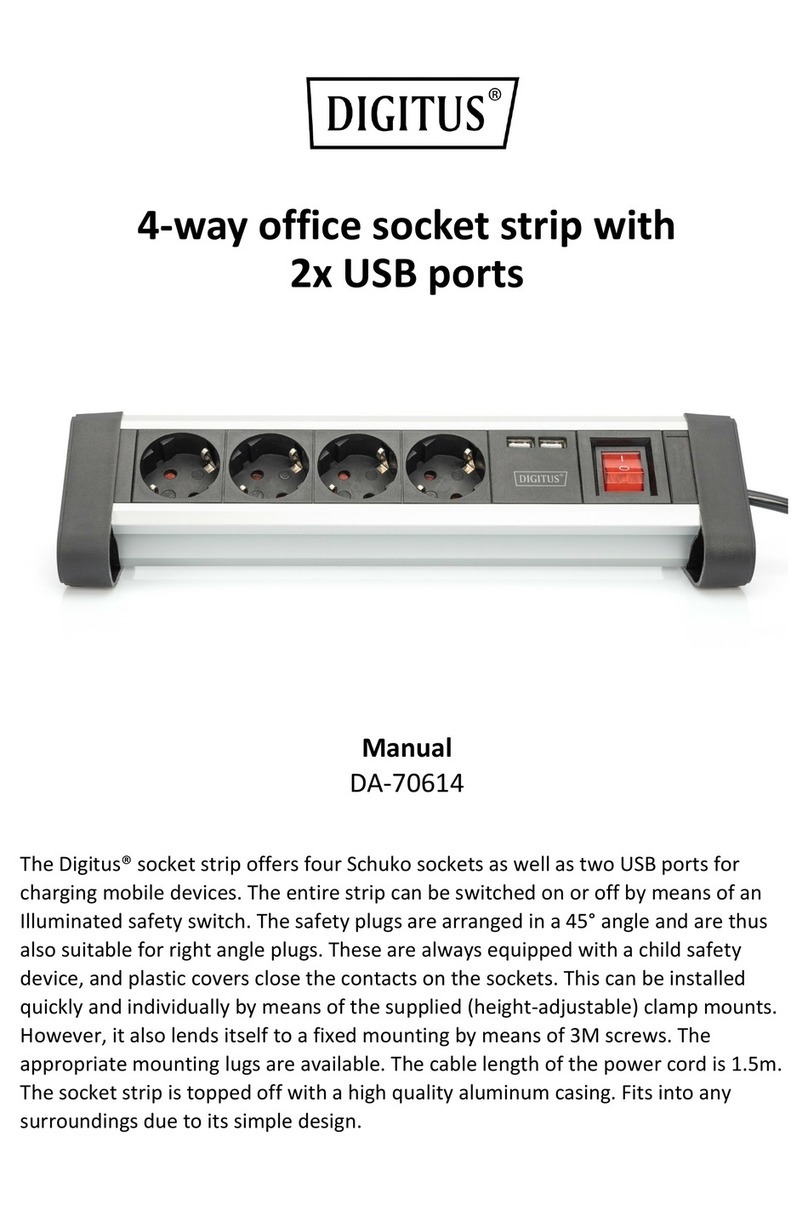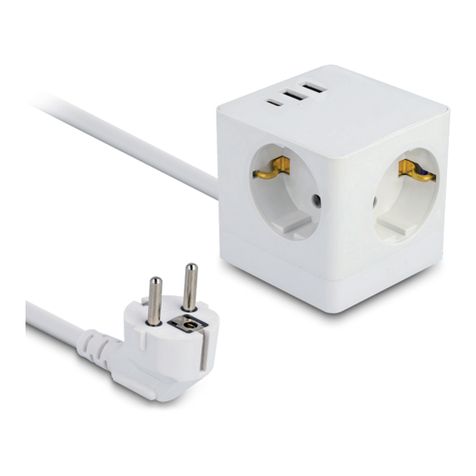2
Description
The Differential Voltage sensor 0210i is designed for exploring the basic principles
of electricity. With a wide input voltage range of 10 V this sensor can be used to
measure voltages in AC and DC circuits.
The sensor has differential inputs, which means that measurements can be done
directly across circuit elements without the constraints of common grounding. It can
be used to measure positive potentials, as well as negative potentials. It has two
banana (4-mm) plugs for easy connection.
The Differential Voltage Sensor should be connected parallel to a circuit element. It
measures the potential difference between the V+- red plug and the V-_- black plug.
The measured voltage goes through an amplifier unit and the output of the sensor is
adjusted to the range of 7V, which can be measured by an interface.
The sensor is provided with over-voltage protection and voltages up to 50V
(related to ground) will not damage the sensor. It never can be used for higher
voltages or 220V.
The sensor is excellent to sample AC-signals at relative high frequencies (< 100
kHz).
The sensor is equipped with a BT plug and can be connected to the following CMA
interfaces: €Lab, CoachLab II/II+and ULAB. Furthermore the sensor can be used
with Texas Instruments CBL, CBL2and Vernier LabPro.
Sensor specifications
The Differential Voltage sensor has a memory chip (EEPROM) with information
about the sensor. Through a simple protocol (I2C) the sensor transfers its data: name,
quantity, unit and calibration to the interface1.
Examples of experiments
The Differential Voltage sensor can be used in various experiments such as:
charging and discharging capacitors,
characteristics of a light bulb and a diode,
measurements of internal resonance and EMF,
measurements in series and parallel electrical circuits.
Together with a Current Sensor it can be used to explore the relationship between
the current and the voltage in electrical circuits - the Ohm’s Law.
1This is valid for the following interfaces: CMA €Lab, BT inputs of CoachLab II/II+and ULAB,
TI CBLand CBL2, and Vernier LabPro.
